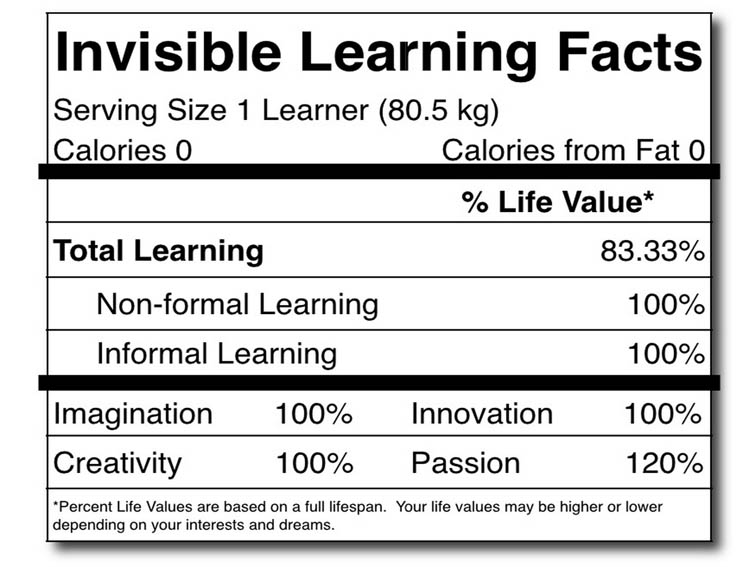Invisible Learning: An Archetype For A New Ecology Of Education
by TeachThought Staff
In moving from traditional, tightly-bound direct instruction to something almost entirely self-directed and open, Invisible Learning almost sounds like a joke.
It’s about as far from the current definition of “school” as you can get: Always-on learning–not scheduled into neat little categories, but tangled authentically with real life; learning from all sources, constantly, rather than “I did my learning at school”; passion-based and curiosity-driven learning that is sourced from intrinsic motivation, rather than external pressure (and, crucially, external performance).
Evaluation of performance comes from both the student and a constantly shifting network of peers. It also overlaps cleanly with self-directed learning and learning through play. Entrepreneurial Learning and Invisible Learning are very similar as well–in fact, so many of these trends are slight variations of a very powerful, key idea: placing the learner dead-center in the learning process, and strategically connecting them to resources and learning models that they can use to self-actuate learning.
The following presentation by John Moravec starts off the presentation with the obvious statement: “Schooling doesn’t always lead to success,” then lists 4 seemingly fragmented ideas to begin to define Invisible Learning.
4 Features & Characteristics of Invisible Learning
1. Sociotechnological archetype for a new ecology of education
2. Remixes
3. Suggests for applications for ICTs
4. Not the answer to all our problems
#4 is maybe most interesting, because it honestly deflates hype and trend, shifting the tone of the presentation from Nostradamic decree to well-informed flashlight. It’s hard to imagine a future where self-directed learning–in the form of entrepreneurial learning, invisible learning, question-based learning, project-based learning, or something else entirely–isn’t ‘the light.’ (Also suggesting a kind of Inside-Out School Learning Model as well.)
The challenge in getting there is to bridge where we are with where we cna get: to these open alternatives to threaten to (wonderfully?) disrupt every single bit of the process we use today.
John Moravec’s full presentation on slideshare


